Isle of Wight monolith: Designer claims responsibility for structure
- Published
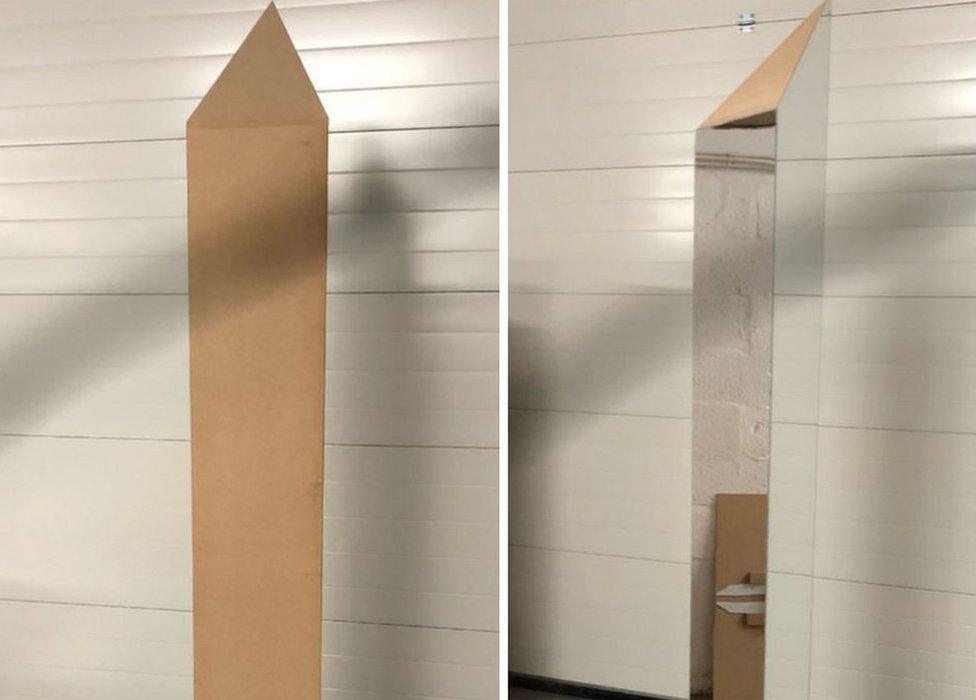
Mr Dunford said he used material from his work to create the monolith
A designer has told the BBC he erected a monolith on a British beach in tribute to others which have popped up around the world.
The pillar, similar to ones in the US and Romania, sparked global headlines after it was found on the Isle of Wight off the south coast of England.
Tom Dunford, who lives on the island, said: "I did it purely for fun."
The gleaming structure on Compton Beach has been attracting an influx of visitors since its discovery on Sunday.
The reflective structure sparked a stir on social media about who put it there and why.
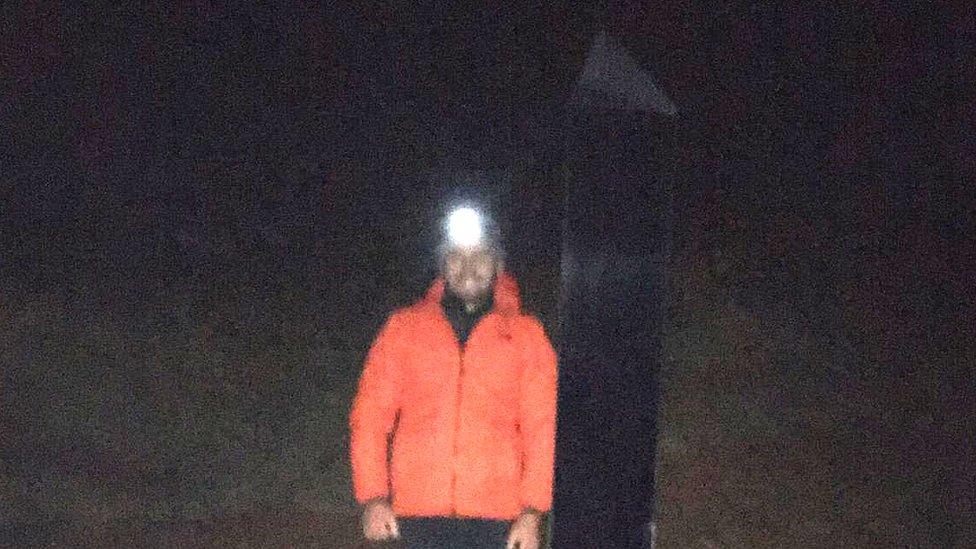
Mr Dunford said he put the structure up at about 04:00 GMT on Sunday morning
Mr Dunford, 29, from Fishbourne, told BBC Radio Solent: "If the aliens were to come down I think they'd go for the safest place which is the Isle of Wight in tier 1 [Covid restrictions].
"I was convinced it would be stolen in the first couple of hours."
Mr Dunford, who works for a design company, said: "When I saw the first one pop up [in Utah] I thought it was brilliant, the second one popped up and I had a text from a friend which said 'you're the man that can do this on the island'.
"I'm absolutely fascinated in futuristic design, science and space. The actual idea sparked when I was walking back to the office and we had an old sheet of mirrored perspex."
Mr Dunford said he told a few trusted friends and relatives about his plan before he drove down to the beach at 04:00 GMT on Sunday to install it.
"I'm one of these guys, once I get a creative streak I have to just go for it," he added.
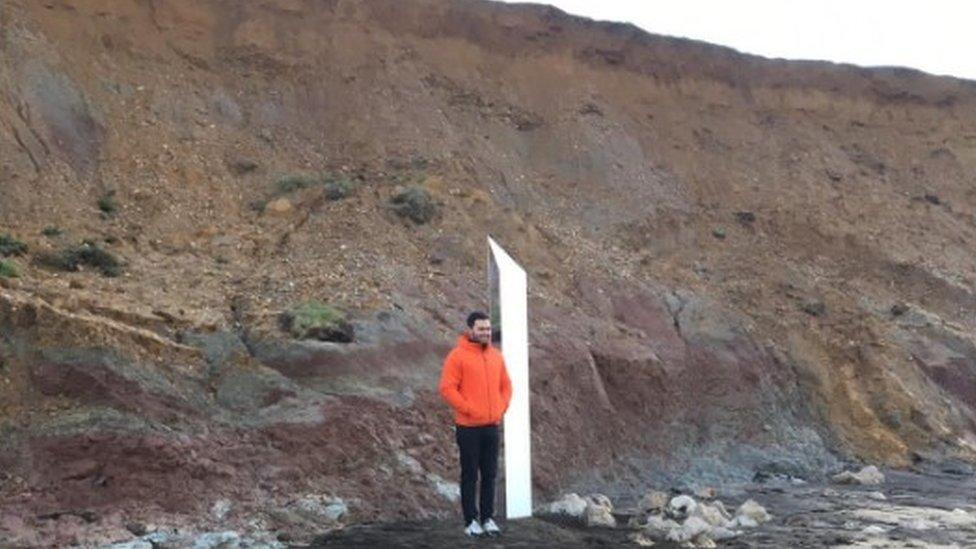
Mr Dunford (pictured) said his gleaming structure was inspired by the monolith in Utah
But he admitted he did not expect it to get the reaction it did.
"I'm going to leave it and let people take photos and go and collect it in a couple of days," he said.
The beach is being closely monitored to avoid a deluge of crowds, the National Trust has said.
The trust, which is responsible for the site, said rangers would "ensure the beach remains safe and does not become overcrowded".
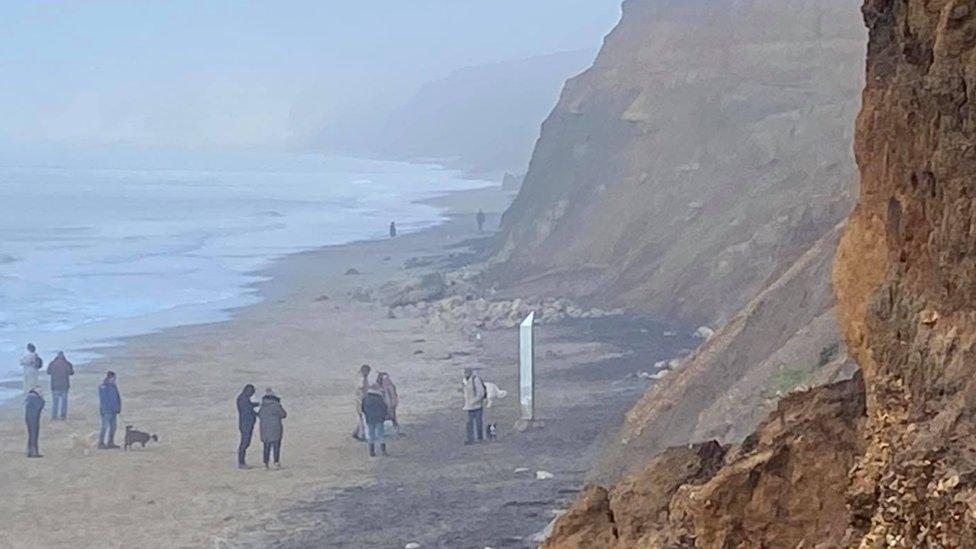
The National Trust said visitor numbers to the beach would be monitored to "to ensure the beach remains safe"
A metal monolith appeared briefly in the Utah desert late last month. It created wild speculation on social media and apparent copycats with two others found in southern California and Romania days later.
An anonymous collective called The Most Famous Artist has taken credit for the monoliths in Utah and California - it posted an image of the Utah monolith on Instagram, with a 45,000 US dollar (£34,000) price tag.
In 2001: A Space Odyssey - the 1968 film directed by Stanley Kubrick - imposing black monoliths created by an unseen alien species appear in the movie, based on the writings of novelist Arthur C Clarke.

Follow BBC South on Facebook, external, Twitter, external, or Instagram, external. Send your story ideas to south.newsonline@bbc.co.uk, external.
Related topics
- Published7 December 2020
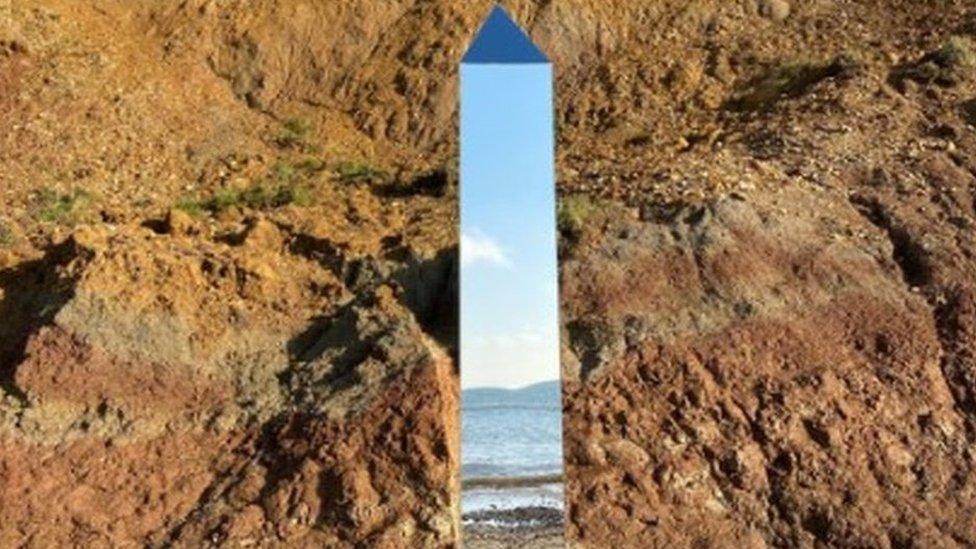
- Published29 November 2020
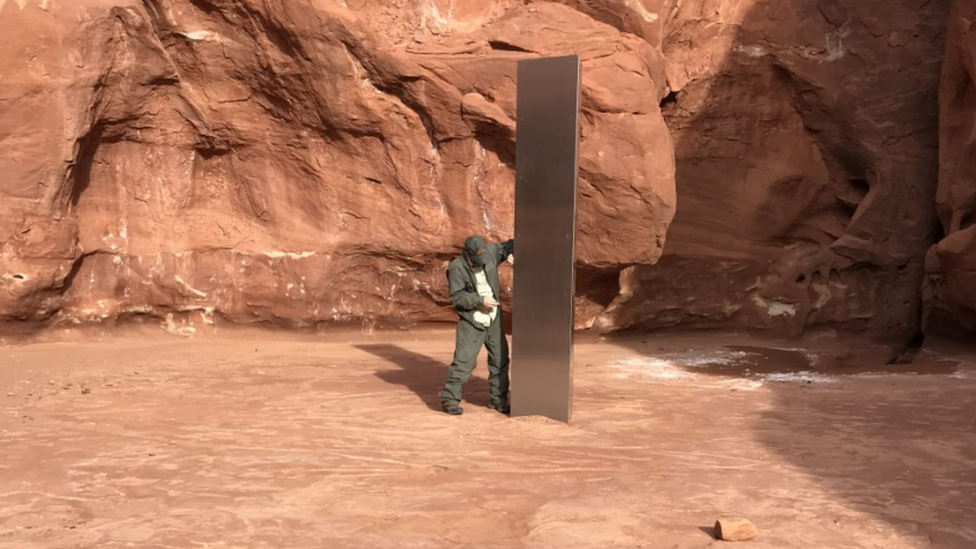
- Published24 November 2020
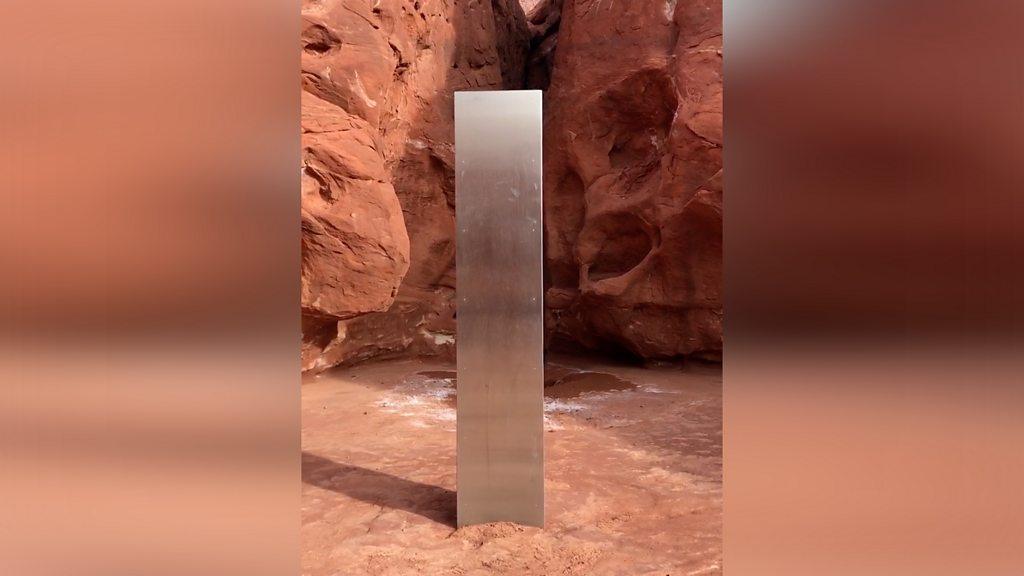
- Published24 November 2020
